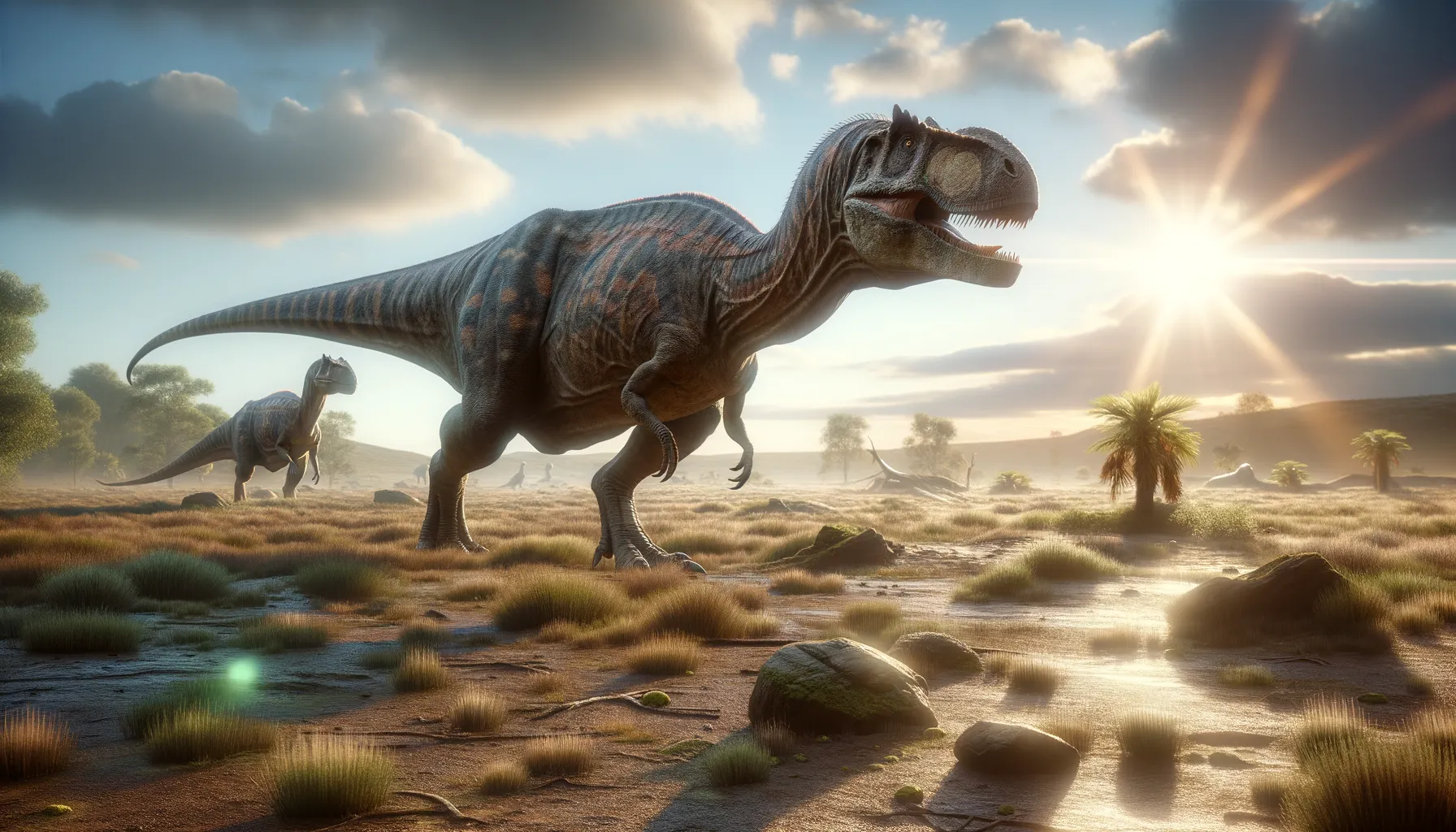
Koutalisaurus
Discover the beaked herbivore of the Cretaceous!
Period
Cretaceous
Length
About 8 meters in length.
Height
Around 3 meters tall.
Weight
Approximately 2 tonnes.
Koutalisaurus was a large herbivorous dinosaur that thrived during the Cretaceous period. Known for its distinctively beaked mouth, it likely roamed the ancient landscapes in search of vegetation. The first fossils were found in Spain, giving us glimpses into its adaptation to the environment. Its considerable size and physical features suggest it had a specialized diet and lifestyle.
Diet
Koutalisaurus primarily fed on plants, using its beak-like mouth to strip leaves and vegetation. Its diet would have included a variety of ferns, cycads, and flowering plants available during its time.
Hunting
As a herbivore, Koutalisaurus did not hunt but focused on grazing. It spent much of its day foraging within its territory, relying on its ability to find and access abundant plant material.
Environmental challenges
Koutalisaurus faced challenges such as changes in climate, which could impact plant availability. Additionally, competition with other herbivores meant it had to adapt its feeding habits. Predators were another threat, requiring vigilance and, possibly, group behaviors for protection. Environmental shifts also demanded migration to ensure sufficient resources.
Speed
Likely slow-moving due to its size.
Lifespan
Estimated to be several decades long.
First discovery
Discovered in 2004 in Spain.
Fun Facts
- Koutalisaurus was discovered in Spain and its name means 'spoon lizard' because its jaw bones look like a spoon.
- This dinosaur lived during the Early Cretaceous period, around 130 million years ago.
- Koutalisaurus belonged to a group of plant-eating dinosaurs known as hadrosaurids or 'duck-billed dinosaurs'.
- Its fossils show that it had a broad, flat beak which was perfect for grazing on vegetation.
- The unique shape of its jaw suggests that Koutalisaurus may have had a specialized diet compared to other dinosaurs.
- Koutalisaurus shared its environment with a variety of other dinosaurs and early mammals.
- Though only fragmentary remains have been found, Koutalisaurus helps scientists understand the diversity of dinosaurs in ancient Europe.
Growth and Development
Young Koutalisaurus were likely vulnerable to predators until they reached a certain size. As they grew, their robust bodies afforded them more protection. Growth rates would have been influenced by food availability and environmental conditions. Once they reached maturity, they showcased formidable features that defined their species.
Habitat
Koutalisaurus lived in lush, forested areas with access to plenty of vegetation. Fossils suggest it inhabited regions with a mix of woodlands and floodplains. The environment provided both sustenance and shelter, essential for its survival. Its habitat likely experienced seasonal changes, influencing migration and feeding patterns.
Interaction with other species
Koutalisaurus shared its ecosystem with various dinosaur species, both herbivorous and carnivorous. Its size and social behaviors may have helped it coexist peacefully with other herbivores. Predatory threats required keen awareness and possible herd dynamics for defense. Interactions played a role in its daily survival and social structure.
Natural lifespan
Koutalisaurus likely lived for multiple decades in the wild.
Reproduction
Reproduction involved laying eggs, typical of dinosaur behavior. Nests were probably built in secure areas to protect against predators. Parent dinosaurs might have shown care to ensure offspring survival. Generational continuity depended on successful breeding and protection strategies.
Social behaviour
Koutalisaurus may have lived in groups, which could help deter predators. Social structures were likely based on age and size, providing safety in numbers. Communication might have played a role in group cohesion and survival. Group dynamics could influence feeding and migration paths.
Fossil locations
Most Koutalisaurus fossils have been discovered in Spain, specifically in Lleida Province. The region's sedimentary layers offer insights into its living conditions. These fossil findings help paleontologists piece together the environment it inhabited. Continued exploration might reveal more about its distribution and diversity.
